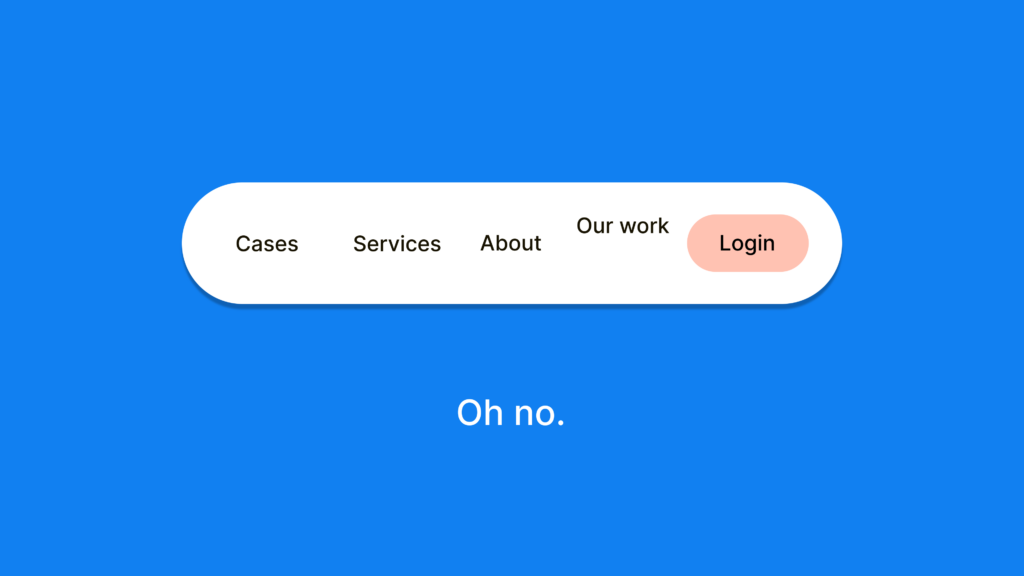Why it was important to perform contextual inquiries in different countries/ markets?
Different teams, different agreements
In general, the call center teams worked in a similar way in the different countries. Logical as they are centrally directed and supported by the head office in Germany.
However, we observed that the different teams made different (practical) agreements amongst each other:
- Within some markets, we noticed that there was a larger pressure to achieve the KPI’s compared to other markets. This was shown in the way a certain case (a customer problem) was handled within the application.
- Also, we noticed that each team uses their own codes to mark a common problem. However, the underlying User Interface (UI)-issue is identical viz. that certain information/ fields aren’t exported to Excel. This makes it impossible to report on these matters.
- The different teams have different methods to follow up a customer problem. But also here, a common UI-problem is the cause; viz. the fact that in the application, there is no clear overview of the consecutive steps or actions which need to be executed to solve a customer problem.
In many cases, the different agreements or habits did have the same underlying UI-problem.
The same profile has a different implementation in the different countries
The same roles sometimes have different tasks in the different countries.
That way, the coordinator of the contact center in one country can be responsible for assigning ‘cases’ to his staff. In another country employees are taking turns to do this. In a third country, two fixed employees are responsible for this task.
In one country, a technical manager had access to the application, while the same profile in a different country wasn’t granted permission and had to communicate through e-mail to send his feedback on customer issues.
That an identical profile can have different implementations (tasks, responsibilities) in different countries, has its consequences when deciding on the different roles and permissions within the application.
Conclusions
Our analysis shows that the different user profiles used the contact center application mostly in the same way, even in the different markets. However, we also saw a difference in agreements and different ways of working amongst the different teams.
No matter how the teams used the application; in general, the same obstacles (UX & usability issues) appeared.
As Jacob Nielsen writes in his article: “People are the same the world over, and all the main usability guidelines remain the same”. After all, he says, usability guidelines are a derivative of the Human-Computer Interaction Principles which are based on the characteristics of computers, the human brain and the many ways in which both differ.
In order to get a view on the organization within each contact center and the different contexts in which the users used the application; is appeared to be very useful to involve multiple contact centers and different countries into the inquiry.
On top of that, certain profiles – like a coordinator or a guarantee- or technical manager – are only a short time present at one contact center. Because we can’t draw conclusions based on the experience of only one user per profile, we were forced to visit multiple contact centers.
By involving the different markets in this UX-research, we created a larger interest and involvement in this project. The participants of the different markets are already looking forward to the prototype which will follow soon. Now it is ‘our joint project’.
Tips for contextual inquiries in different markets:
- Don’t assume that all participants can express themselves in English.
Provide a translator allowing participants to express themselves in their own language. Thanks to this approach, they will feel less reserved and they can describe their experiences with more detail.
- Foresee enough time.
It is very time consuming to carry out contextual inquiries in different countries. However, it was worth it to observe the different contexts in which the employees used the application. Because of the different context in each country, we got a wider and better view on the project.
- Expect participants to be very talkative.
They are happy that their opinion matters and like to give feedback on the application they use daily. However, often they elaborate and it will be the observers task to bring them back to the subject of the research, in this case the UI of the contact center application.
- Find a way to involve them into the sequel of the project.
The contact center employees were very enthusiastic to share their user experience; but at the same time, they were also very curious to see the result.
We presented the conclusions and recommendations for the new application during a meeting (live & conf call) with the coordinators or managers of the different contact centers. Also, in the next stages of the project they will be contacted frequently to share their opinion or feedback.
International Usability: Big Stuff the Same, Details Differ, by Jakob Nielsen, June 6, 2011
https://www.nngroup.com/articles/international-usability-details-differ/
International user research KLI Webinar Series, June 9, 2014
https://www.youtube.com/watch?v=sqQclBghZW0
Why are contextual enquiries so difficult? By Jim Ross, June 4, 2012
http://www.uxmatters.com/mt/archives/2012/06/why-are-contextual-inquiries-so-difficult.php


